
Last summer, I was ripping down the upper section of one of my favorite local trails. Trailforks lists the trail as “Downhill Primary,” with 82% of the traffic descending—a perfect percentage to forget that people climb that particular section.
Of course, someone climbing was precisely what I encountered. Fortunately, I dodged the climber, but it took me through a couple of manzanita bushes. As I brushed myself off I couldn’t help but think that we all would benefit from making this a “descending-only” trail.
To hear more about the benefits of directional trails, Singletracks connected with Mike Repyak, IMBA Trail Solutions Director of Planning and Design, and Joey Klein, IMBA Trail Solutions Trails Specialist. Together, the two bring decades of trail experience to the conversation and have waded through the turmoil of direction and single-use trails.
Directional trails reduce trail conflict
Newly proposed trails will have all user groups coming to the table, wanting trail access. And, for some user groups, when they see that some trails are directional, they can feel that it limits their access. For example, a downhill-only mountain bike trail is inherently limiting to other users, as they don’t get access to the trail unless they are also on two wheels.
But in no way does Repyak see directional trails as limiting use. Instead, as he works on trail design, he sees directional trails enhancing all users’ experience. This usually starts with balancing the local users’ needs with what the landscape is giving them. “It’s about looking site-specific and how we can achieve high-quality experiences,” Repyak said.
Perhaps a better way of understanding trail directionality is to look at it from a single or shared-use lens. For every trail designated as single-use, several more are perfect for shared-use trails.
And providing these trail designations can significantly reduce trail conflicts between users. Rather than seeing this as something that limits access, Repyak and Klein argue that it provides each user group with the specific experience they are looking for.
“There might be some trails that lend themselves to being shared use,” Repyak explained. “Beginner trails. Wider, gentler grades that are more appropriate to have shared use on, rather than a double black diamond, steep, narrow trail.”
Shared-use trails can easily incorporate mountain bike climbing trails. Repyak and Klein spoke of trails where equestrians and hikers could go in either direction, but mountain bikers could only climb. Once at the top, the mountain bikers have their single-use descending trail, and equestrians and hikers have other trails they could access, thus keeping user conflicts to a minimum.
A “single-use” designation extends beyond mountain biking, hiking, and equestrians. Klein and Repyak shared that dogs now have their own designated trails. Klein used the example of Utah, explaining how dogs aren’t allowed in some of the major drainages in the Salt Lake area.
The closest major drainage that allows dogs is Draper Canyon. “So they got flooded with dog walkers [to the point where] it’s almost too much,” Klein said. Rather than creating another dog park, a couple of loops were created for users to run or walk their dogs. This provides a place for dog owners to take their dogs where they won’t spook a horse or have their leash become entangled in someone’s drivetrain.
Klein and Repyak continued to emphasize that single-use trails aren’t just for mountain bikes. Typically, when there are single-use trails for bikes, trail systems often incorporate single-use trails for other users too. The goal was to spread users out and reduce conflict. This reduction of conflict is perhaps seen as the trade-off for not being able to access every single trail.
Draper, Utah
Both Klein and Repyak pointed to Draper, Utah, as an example of a trail system where directional, single-use trails have flourished. In response, people are heading to Draper to experience the phenomenal trails.
The two couldn’t confirm but thought that Draper saw a 400% increase in trail users in the last several years. Such an increase would surely mean an increase in conflict. But Draper seems to be a different experience.
“Per trail counters, we have close to one million users per year on our trail system,” Greg Hilbig told us. Hilbig is the Trails and Open Space Manager for the area. Obviously, some of those users will be Draper residents, but in a town of around 50,000 people, one million trail users suggest visitors are a part of the mix.
Much of that is thanks to well-designed trails that significantly reduce conflicts. Hilbig told us they built their first “downhill only” trail for mountain bikes in 2008, and the idea was well received. Why? It reduces trail-user conflict.
“Directional trails, especially for downhill bikes where there’s more speed and features, help reduce conflict on multi-use trails,” Hilbig explained. “We also have multi-use trails where bikes can only go up, which also reduces conflict.” Draper utilizes shared trails where mountain bikes join hikers and equestrians on the climb but branch off to single-use trails on the way down.
However, mountain bikers aren’t the only ones getting their own trails.
“Once we built a few DH trails, we started adding hiker and equestrian-only trails. We now have both types of user-specific trails,” Hilbig explained. “Both user groups are happy knowing they won’t have to dodge the other types of users.”
Hilbig explained that as far as “directional” trails go, that distinction is mainly reserved for the single-use, mountain bike downhill-only trails. While still being single-use, the hiker and equestrian trails allow trail users to go in either direction. Hilbig told us that many of the “major arteries” of the trail systems remain multi-use and multi-directional to access these trails.
Draper is an excellent example of directional and single-use trails that significantly help a multi-use system. Equestrians were the first to use the trail system in Draper and began feeling pushed out as more mountain bikers began riding there. “Rather than saying, ‘Hey, let’s get rid of these mountain bikers,’ equestrians were the ones who said, ‘Can we get some bike-only downs?’ And that was the birth of the Rush Trail,” Klein explained.


Directional trails increase capacity which helps at smaller trail systems
Obviously, directional trails help reduce overall trail-user conflict. If mountain bikers descend at higher speeds on their own trails, equestrians and hikers don’t need to worry about collisions. Similarly, mountain bikers are free to descend as fast as they feel comfortable, knowing there should be no chance of a hiker around the next corner.
Klein also believes that building directional trails has a lot to do with the area where the trails are going and the number of users expected to recreate on those trails. For a more minor, “closed system,” it might make sense to have directional trails. A smaller trail system means less overall space for people to spread out, putting more pressure on the trails, trailheads, and roads leading in and out. Having a designated flow in these areas could help with potential future issues.
“It might be a very small state park, like say Staunton State Park or something back east,” Klein explained. Staunton, in Colorado, has a popular directional loop trail. “It might only have one or two entrances where you have a lot more pressure, more users, and a lot more people. So that’s a great place to have directional or single-use trails.”
A smaller system doesn’t allow users to spread out on the trails as much, and with trail users going any direction they please, the trails can feel crowded. Directional trails in places like Staunton keep user flow going simply by reducing the number of times trail users will cross paths head-on.
“Directionality has allowed us to do a lot of things in the management of trails,” Repyak said. “[It] will increase the trail capacity because everybody’s going in the same direction.”

Directional trails up the fun factor
Klein helped us understand their trail design process by giving the example of a triangle with different, sometimes conflicting, points on the triangle. One point of the triangle may be sustainability, while another might be if the trail fits in with surrounding nature.
The third point of the triangle is rideability—how fun the trail is. Klein argued that the fun factor doesn’t always reach its full potential when the trail is going both directions.
“For instance, if it was a shared use, dual-direction trail, I can’t crank that fun factor up to eleven because there are people coming up it,” Klein said.
This fun factor being turned up doesn’t even have to correspond to gravity-oriented trails. Klein spoke of Lebanon Hills in Minnesota and how users are having a more enjoyable experience because they know which direction other users will be coming from. No surprises.
Klein shared that during IMBA’s early days, they really had to focus on things such as sustainability or conservation, especially when it came to multi-use, multi-directional landscapes. And while IMBA obviously still focuses on these issues, they can also focus more on user experience, “cranking up the fun,” as he put it.
But it’s not always so easy
Trails designated “climbing only” or “downhill only” are becoming more common. But Klein told us that this wasn’t always the case. Speaking of the early days of IMBA, Klein remembers the attitude leaning heavily toward all trails being shared-use. And with shared-use trails often comes the multi-directional designation, as it usually doesn’t make sense to put hikers and equestrians on a descending-only trail.
Klein, who has been with IMBA for 25 years, participated in IMBA’s first international trail-building school in Wales. Despite the fact that all of the trails they rode were directional, Klein was skeptical about whether directional trails would work in the United States.
One reason for this could be that Americans don’t like being told what to do. “In America, we want to keep our freedom as far as saying, ‘Why, maybe one day I want to ride that [trail] the other direction,” Klein said.
Another factor is land manager approvals. Both Klein and Repyak noted that the Forest Service (USFS) and Bureau of Land Management (BLM) differ in their management strategies. “The BLM is much more receptive to more modern trail experiences. The Forest Service is still, ‘All trails are for all users and all directions,’” Repyak said.
However, the USFS may be warming to the idea of directional trails. Repyak mentioned trail systems in Prescott, Arizona, where the USFS is finding directional trails are a potential solution.
As time goes on, trail builders and land managers are beginning to see the benefits of directional trails not only for the land but also for the experience of the trail user. “Directionality opens up another dimension to managing experiences on a trail landscape,” Repyak explained. “It’s pieces in our toolbox when it comes to design and implementation that focus on trails providing the experience objectives that trail users are looking for.”
And, it would seem that this sentiment toward directional trails is accurate. When asked what states they see directional trails popping up in, both Repyak and Klein responded: “All of them…”












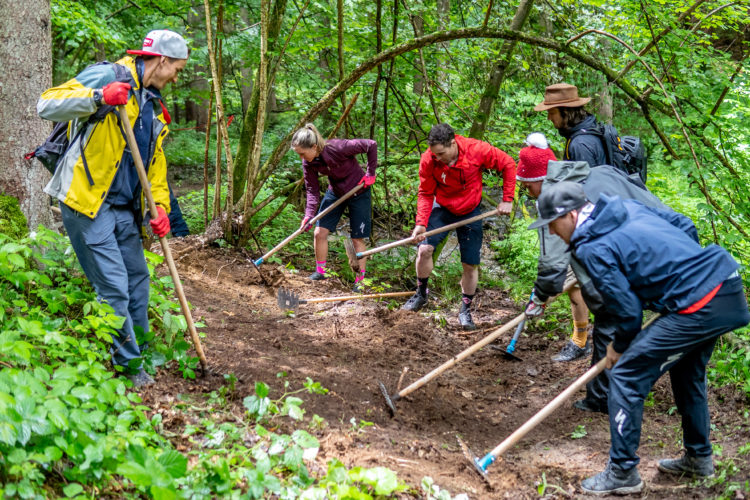
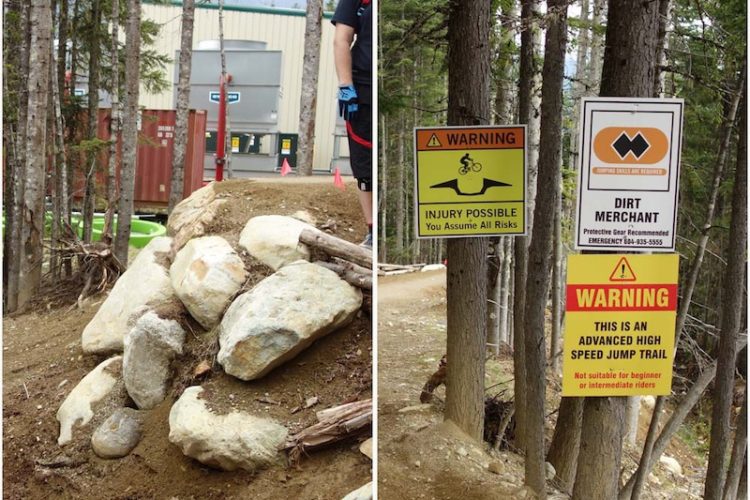
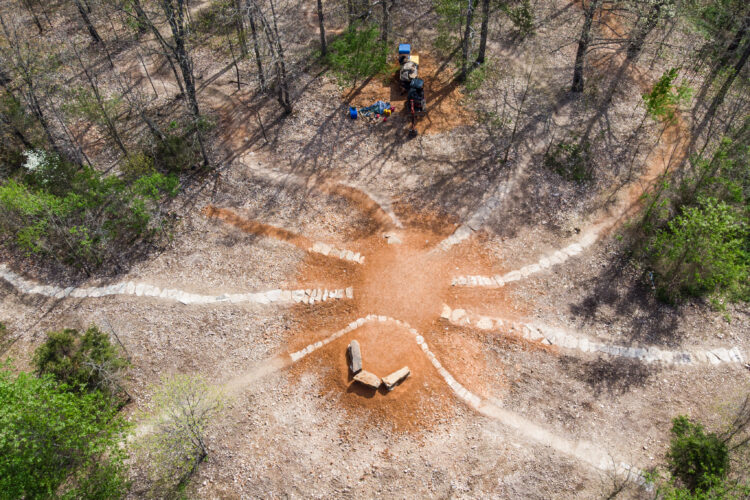
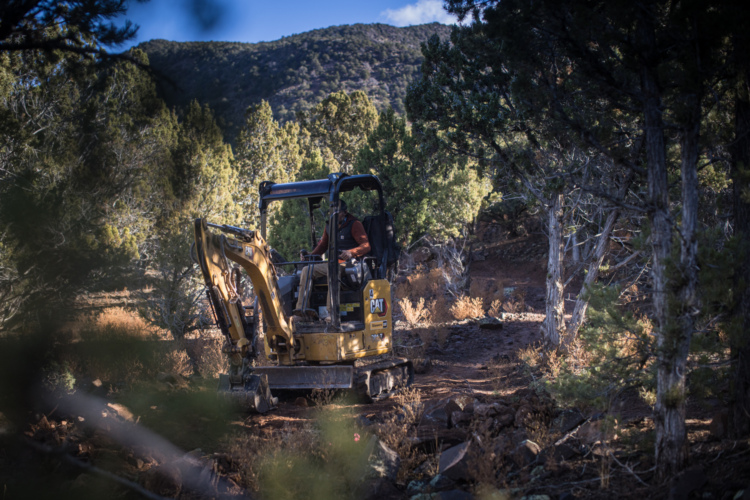



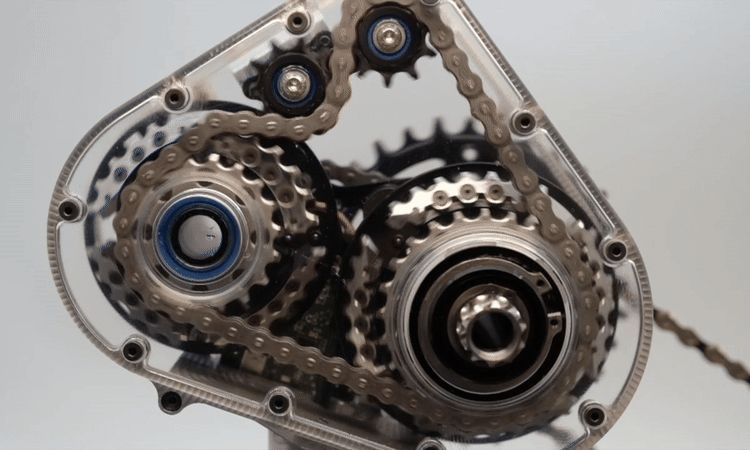

12 Comments
Jun 4, 2024
Jun 10, 2024
Jun 6, 2024
Jun 3, 2024
First, directional trails are the best solution to 2 situations that occur on trails: 1) high usage volumes and 2) large speed differences between user groups.
For the former, routing opens can be same way (hikers and bikers go the same direction) or face-to-face (kind of of obvious). You can combine this with day switching, that is X days are clockwise, Y days are counter-clockwise. DTE Trail in Michigan is the posterchild for how to do this. This type of routing is the best for urban or near-urban trail systems with high use volumes. The daily rider count on Lebanon Hills trails mentioned in the article, for instance, will melt your brain. However, it does require real stacked looped systems, something people west of Kansas City are apparently incapable of figuring out. ;-)
The latter is probably what most people would think of, especially in the western USA, where winch-n-drop riding is the norm. In those situations, you have trail that (typically) climbs and descends in a loop, with separate MTB-only trail(s) branching off and returning to it, based on the potential speed differences. These work well in lower volume trails or longer trails where even high volume use gets spread out.
Secondly, all this ^^^ has been figured out years (decades?) ago by the places that do it. Here in MN, its known as User Management Techniques. These set of tools and choice trees help a land manager and trail designer target the trail to match its inputs. A 1.5 mile neighborhood trail in the 15 acre wooded area in a subdivision is going to have much different use and volumes than a 25 mile regional destination trail in a 600 acre county park. These two examples need to have different designs, trail management, controls, etc.
While Klein and Repyak talk about this (directionality) a bit, overall, my opinion is that IMBA is a bit... hesitant... to platform the methods and tools that exist to do this, likely because they are quite rigid. I would say, if you are reading this comment from, say Seattle or San Diego, or someplace where directionality (and real loops) aren't the norm, IMBA can help, but nothing is going to help more than talking to the people that do this all the time. That might be hard to swallow, i.e. "you're from flyover country", "we have real mountains", etc. But the fact is, the places have been doing directionality, especially in multi-use situations, have been doing it for a long time and have a lot to teach you.
Jun 6, 2024
The tricky part about one-way trails is when an existing area you've been riding forever suddenly goes this route. Suddenly, you never get to go "down" Ben's Trail in Bend again. Ever.
Jun 4, 2024
Jun 7, 2024
Jun 7, 2024
Jun 7, 2024
On Multi-user trails we need to bike in control ready to stop on a moments notice, without scaring others on the shared trails we all enjoy!
Jun 11, 2024
So, even the ones that form (part of) a loop, can be accessed from many places, so requiring one way traffic is hard, because it prohibits users from accesing the trailnet work.
Jun 4, 2024
Making the area useful to only one riding discipline.
Jun 4, 2024
My trials riding still reigns supreme.